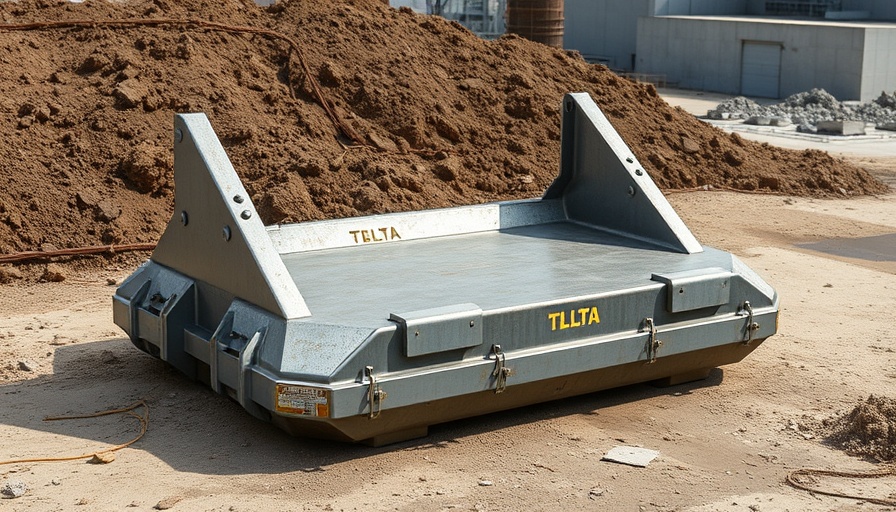
Introducing the Delta TL-2+: A Game Changer in Crash Safety
TrafFix has set a new standard in roadside safety with the unveiling of its innovative Delta TL-2+ crash cushion. This robust system is not just another piece of equipment but a critical advancement in crash attenuation technology, designed for high-traffic environments and capable of handling the demands of today’s roadways.
Why the Delta TL-2+ Stands Out
What makes the Delta TL-2+ unique is its designation as the first non-gating redirective cushion to successfully pass Manual for Assessing Hardware (MASH) testing at speeds up to 50 mph. This achievement is particularly significant, given that most MASH TL-2 devices are only rated for speeds up to 43.5 mph. The Delta TL-2+ has dimensions of 13 feet long, 32 inches high, and 30 inches wide, while weighing a hefty 1,460 pounds. This compact design saves roadside space while allowing for efficient transport of 27 fully assembled units on a 48-foot flatbed trailer.
The Technology Behind the Cushion
At the core of the Delta TL-2+ is an innovative attenuation system utilizing Thrie-Beam panels that incorporate engineered cut-outs and diaphragms. This design not only improves energy absorption but also helps control deformation upon impact. The strategic use of tear bolts further enhances its effectiveness. Additionally, the Delta TL-2+ features parts that are interchangeable with TrafFix’s Delta TL-3 system, streamlining serviceability and reducing inventory costs for contractors.
Streamlined Installation for Safety
Installation of the Delta TL-2+ is designed to be straightforward, involving drilling, epoxy anchors, and precise torquing. It can be installed on either concrete or asphalt with just 27 anchor bolts. Notably, the system ships fully assembled, minimizing labor needs and reducing the risk for workers exposed to oncoming traffic during installation. This efficiency is crucial in today’s fast-paced construction environment where safety and speed are paramount.
Enhanced Monitoring Capabilities
In a groundbreaking move, the Delta TL-2+ includes the TrafFix Sentinel Impact Tracker, which offers contractors one year of free monitoring. This advanced feature provides instant post-impact alerts and location notifications, significantly improving response time to collisions. Such proactive monitoring can reduce the likelihood of secondary injuries, showcasing a commitment not only to safety but also to human welfare on the roadways.
The Broader Implications for Road Safety
The introduction of the Delta TL-2+ shake-up conversations around roadside safety technology. As communities prioritize safer road systems, devices like the Delta TL-2+ become integral in ensuring that standards evolve in tandem with traffic demands. For business owners and facility managers, investing in such advanced solutions is not merely a regulatory obligation; it is an ethical one.
In conclusion, the Delta TL-2+ is a pioneering step forward in crash cushion technology, reflecting TrafFix’s dedication to combining safety, efficiency, and innovative technology. Stakeholders in the construction and facility management sectors should take note of its potential to enhance roadway safety.
If you’re looking to upgrade your roadside safety solutions, consider how the Delta TL-2+ can deliver enhanced safety while also supporting your bottom line by minimizing both inventory and labor costs.
 Add Row
Add Row  Add
Add 




Write A Comment